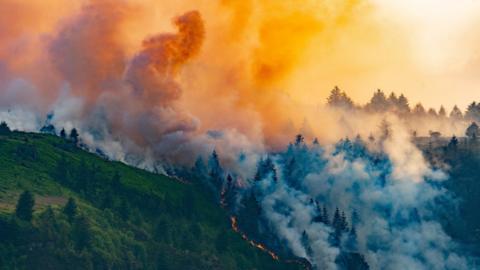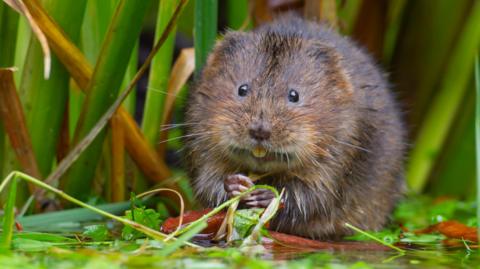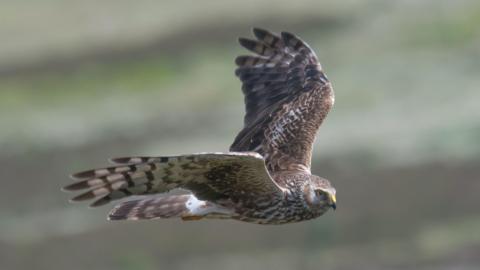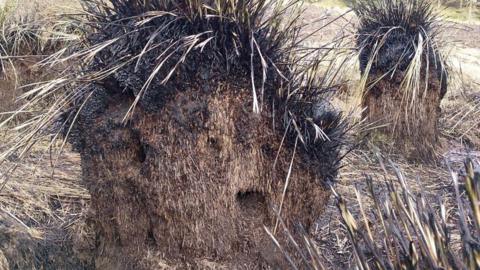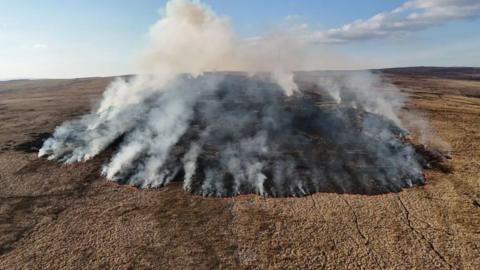Some of the UK's rarest wildlife is being "torched alive" and pushed closer to extinction after weeks of intense grass fires, conservationists have warned.
They include endangered birds like hen harriers and water voles, which are now the UK's fastest declining mammal.
The National Trust said it believed ongoing wildfires at Abergwesyn common in Powys had destroyed "the last remaining" local breeding habitat for golden plovers - considered one of the most beautiful birds of the British uplands.
So far this year 110 sq miles (284 sq km) of land has been burnt by wildfires around the UK - an area larger than Birmingham.
